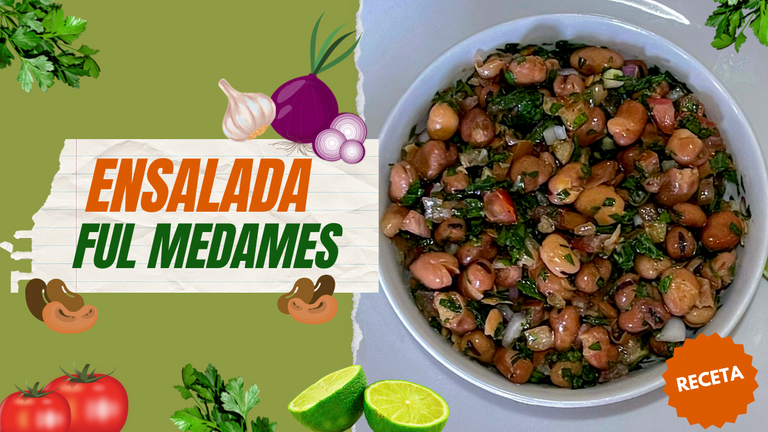

Hola, hola, mis estimados Foodies.
La receta que hoy les quiero compartir es una "variante" de la receta original del Ful Medames, y digo que es una variante porque decidí tomar un atajo para prepararlo en menor tiempo, además que he modificado ligeramente la receta. Para quienes no lo sepan, Ful Medames es un platillo de la gastronomía árabe, específicamente de Egipto, que se prepara a base de habas (ful) cocidas a las que se le incorpora vegetales frescos para servir.
Hello, hello, my dear Foodies.
The recipe I want to share with you today is a "variant" of the original Ful Medames recipe, and I say that it is a variant because I decided to take a shortcut to prepare it in less time, besides I have slightly modified the recipe. For those who don't know, Ful Medames is a dish of Arabic gastronomy, specifically from Egypt, which is prepared with cooked fava beans (ful) to which fresh vegetables are added to serve.
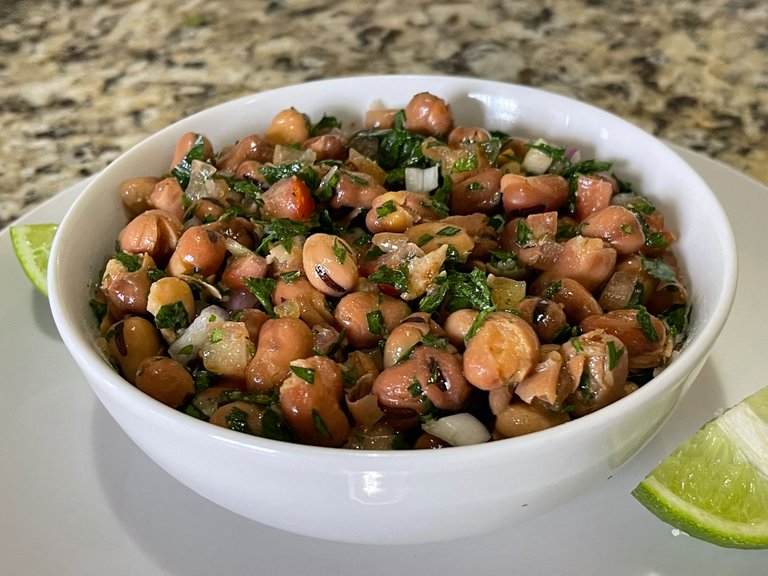
Originalmente, estas habas se deben dejar en remojo antes de ser cocinadas, esto suele hacerse de un día para otro. Luego, una parte de ellas se tritura ligeramente con un poco del agua en que se cocinaron, hasta obtener una especie de puré en el que posteriormente se sirve el resto de los granos enteros. Finalmente, se incorporan todos los demás ingredientes como veremos a continuación.
Hago esta aclaratoria por si en algún momento mi mamá llegase a leer este post, no me desherede. Si bien nosotras no somos de descendencia árabe, ella vivió mucho tiempo con una tía que estaba casada con un libanés, así que aprendió mucho de la gastronomía mediterránea del medio oriente. En gran medida lo que yo sé de dicha gastronomía lo he aprendido de ella, y también con algunos amigos libaneses de la región.
Aclarado este punto, paso a compartirles el paso a paso de mi adaptación de la receta de Ful Medames, en la que no necesitaremos hacer todo ese trabajón con las habas, pues ya existen las habas enlatadas y vienen listas para servir. Por otro lado, hay quienes prefieren servir este platillo templado o caliente, a mi particularmente me gusta frío, tipo ensalada.
Originally, these fava beans must be left to soak before being cooked, this is usually done overnight. Then, a part of them is lightly crushed with a little of the water in which they were cooked, until a kind of puree is obtained, in which the rest of the whole fava beans are served later. Finally, all the other ingredients are incorporated as we will see below.
I make this clarification in case my mom ever reads this post, so she doesn't disinherit me. Although we are not of Arab descent, she lived for a long time with an aunt who was married to a man from Lebanon, so she learned a lot about the Mediterranean cuisine of the Middle East. Much of what I know about that cuisine I have learned from her, and also from some Lebanese friends in the region.
Having clarified this point, I will now share with you the step-by-step of my adaptation of Ful Medames' recipe, in which we do not need to do all that tedious work with the fava beans since canned fava beans are already available and ready to eat. On the other hand, some people prefer to serve this dish warm or hot, I particularly like it cold, like a salad.

Ingredientes
- 1 lata de habas (400grs)
- 1 tomate grande
- 3 granos de ajo machacados
- 1/2 taza de perejil picado
- un poco de cilantro picado
- 1 limón (o sal de limón al gusto)
- 1/2 cebolla morada mediana
- 1/2 cucharadita de comino molido
- aceite de oliva al gusto
- Sal al gusto
Ingredients
- 1 can of fava beans (400grs)
- 1 large tomato
- 3 crushed grains of garlic
- 1/2 cup chopped parsley
- some chopped coriander
- 1 lemon (or lemon salt to taste)
- 1/2 medium red onion
- 1/2 teaspoon ground cumin
- olive oil to taste
- Salt to taste


Comenzaremos por escurrir las habas de la lata. Si lo desea, puede triturarlas un poco, es lo que dicta la receta original, yo no lo hice porque el grano de la lata se sentía al dente, de manera que decidí dejarlo entero. Acto seguido, servimos las habas en un bowl, o en una ensaladera, e incorporamos el ajo machacado, el comino y el jugo de limón (en caso de tener sal de limón puede elegir entre uno u otro).
We will start by draining the fava beans from the can. If you want, you can mash them a little, this is what the original recipe dictates, I didn't do it because the beans from the can felt al dente, so I decided to leave them whole. Next, serve the fava beans in a bowl, or in a salad bowl, and add the crushed garlic, cumin, and lemon juice (if you have lemon salt, you can choose between one or the other).
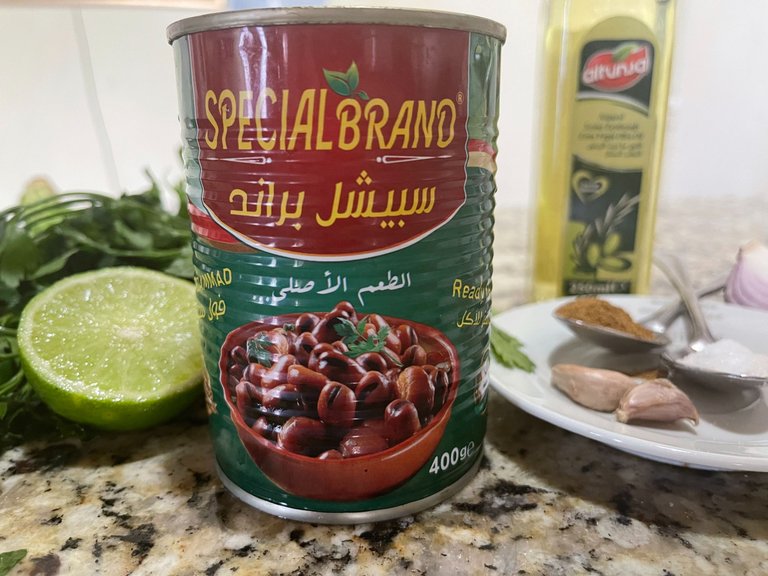


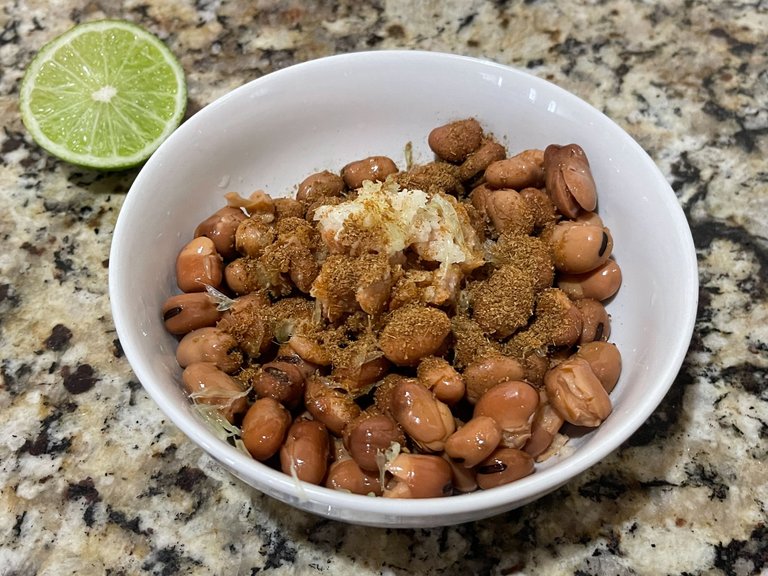

Por otro lado, ya habremos retirado las semillas del tomate para cortarlo en pequeños cubitos. Hacemos lo propio con la cebolla, y finalizamos con el perejil y el cilantro finamente picado. Algunas personas en lugar del cilantro prefieren utilizar yerbabuena, es una opción válida también. Finalmente, incorporamos todo esto a las habas, rociamos un generoso chorrito de aceite de oliva, una pizca de sal al gusto, mezclamos y servimos.
On the other hand, we will have already removed the seeds from the tomato to cut it into small cubes. We do the same with the onion and finish with parsley and finely chopped coriander. Some people prefer to use mint instead of cilantro; this is also a valid option. Finally, add all this to the fava beans, sprinkle a generous drizzle of olive oil, and a pinch of salt to taste, mix and serve.
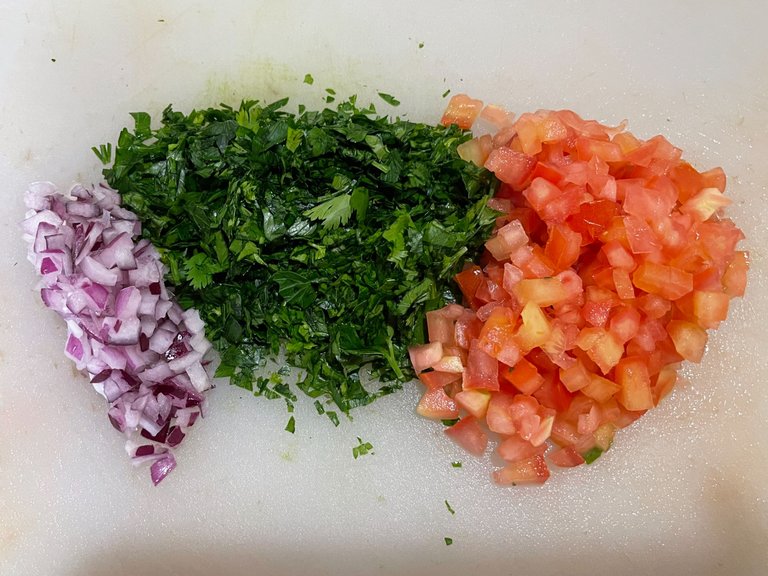
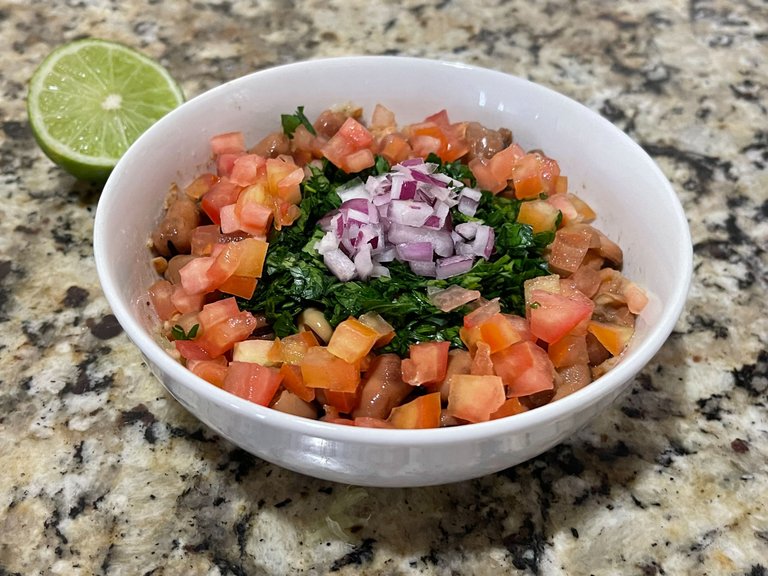
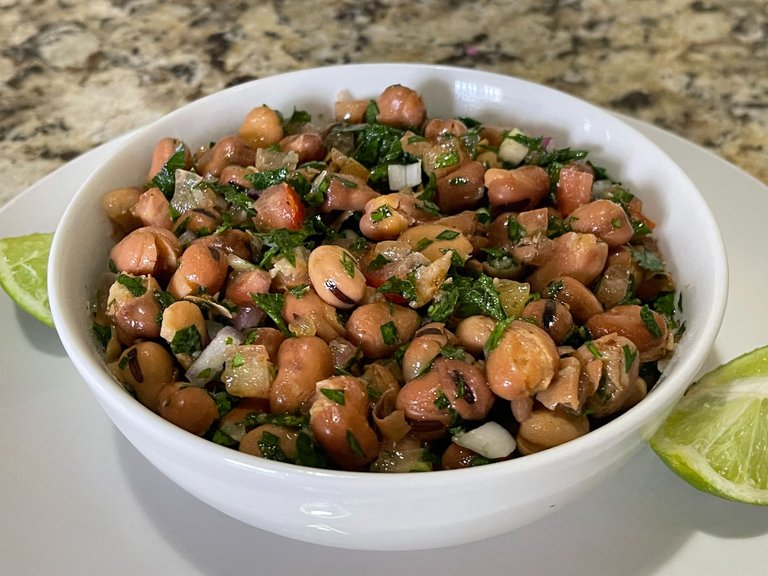


En el caso de la receta original, por ser más cremosita, el acompañante ideal es el pan de pita. En esta otra versión, que es mucho más fresca como ensalada, la pueden comer sola y es igual de deliciosa. Espero que les guste y que se atrevan a prepararla.
In the case of the original recipe, because it is creamier, the ideal accompaniment is pita bread. In this other version, which is much fresher as a salad, you can eat it alone and it is just as delicious. I hope you like it and that you dare to prepare it.
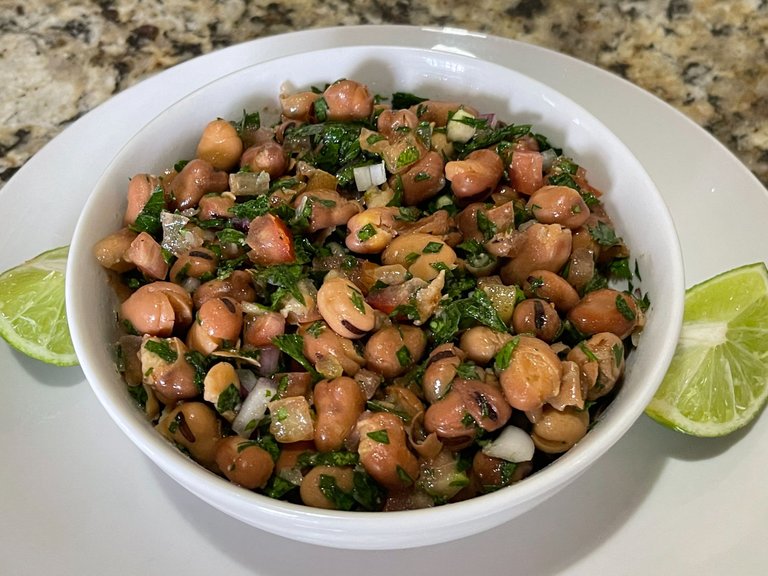
¡Bon Appétit!

Todas las imágenes de esta publicación son de mi autoría y propiedad tomadas con un iPhone 12 Pro Max.
All images in this post are my authored and owned images taken with an iPhone 12 Pro Max.

The rewards earned on this comment will go directly to the people( @gorayii ) sharing the post on Twitter as long as they are registered with @poshtoken. Sign up at https://hiveposh.com.
No negare que comi con solo ver las imagenes🤣🤣 primera vez veo esta comida y me dio muchísima hambreee, exelentes imagenes me encanta como ordenado tú post muchas felicidades
Bueno si las imágenes te invitan a querer prepararlo, entonces el mensaje ha calado jajaja
Es un platillo de la gastronomía árabe, es muy sabroso. Ojalá te animas a prepararlo.
Delicious
Thanks!
Tengo hambre @gorayii
Gracias por tu sabroso post.